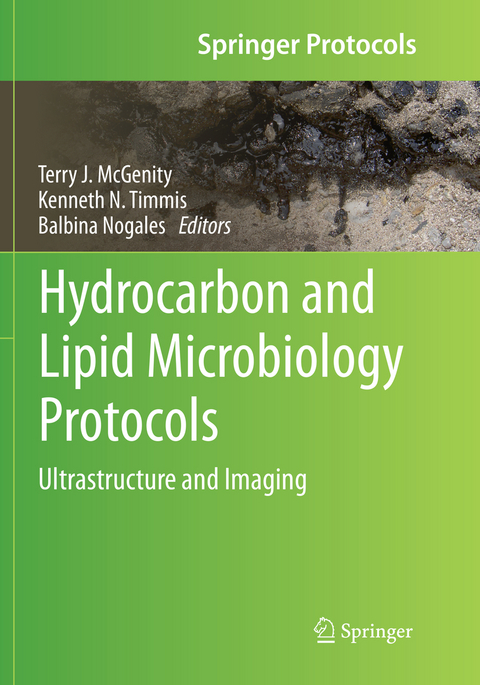
Hydrocarbon and Lipid Microbiology Protocols
Springer Berlin (Verlag)
978-3-662-56983-2 (ISBN)
Hydrocarbon and Lipid Microbiology ProtocolsThere are tens of thousands of structurally different hydrocarbons, hydrocarbon derivatives and lipids, and a wide array of these molecules are required for cells to function. The global hydrocarbon cycle, which is largely driven by microorganisms, has a major impact on our environment and climate. Microbes are responsible for cleaning up the environmental pollution caused by the exploitation of hydrocarbon reservoirs and will also be pivotal in reducing our reliance on fossil fuels by providing biofuels, plastics and industrial chemicals. Gaining an understanding of the relevant functions of the wide range of microbes that produce, consume and modify hydrocarbons and related compounds will be key to respondingto these challenges. This comprehensive collection of current and emerging protocols will facilitate acquisition of this understanding and exploitation of useful activities of such microbes.
Introduction.- Electron microscopy protocols for the study of hydrocarbon-producing and -decomposing microbes: classical and advanced methods.- Protocol for laser scanning microscopy of microorganisms on hydrocarbons.- Fluorescence microscopy for microbiology.- Imaging bacterial cells and biofilms adhering to hydrophobic organic compounds-water interfaces.- Bacteria-mineral colloid interactions in biofilms - an ultrastructural and microanalytical approach.- Identification of microorganisms in hydrocarbon contaminated aquifer samples by fluorescence in-situ hybridization (CARD-FISH).- Studies of the ecophysiology of single cells in microbial communities by (quantitative) microautoradiography and fluorescence in situ hybridization (MAR-FISH).- Protocol for in situ detection of functional genes of microorganisms by Two-pass TSA-FISH.- Three-dimensional visualization and quantification of lipids in microalgae using confocal laser scanning microscopy.- A Correlative Light-Electron Microscopy (CLEM) protocol for the identification of bacteria in animal tissue, exemplified by methanotrophic symbionts of deep-sea mussels.
| Erscheinungsdatum | 05.03.2022 |
|---|---|
| Reihe/Serie | Springer Protocols Handbooks |
| Zusatzinfo | X, 174 p. |
| Verlagsort | Berlin |
| Sprache | englisch |
| Maße | 178 x 254 mm |
| Gewicht | 3569 g |
| Themenwelt | Naturwissenschaften ► Biologie ► Mikrobiologie / Immunologie |
| Technik ► Umwelttechnik / Biotechnologie | |
| Schlagworte | biochemical engineering • Confocal microscopy • electron microscopy • Fluorescence Imaging • Fluorescence in situ hybridization • Microbial community analysis |
| ISBN-10 | 3-662-56983-3 / 3662569833 |
| ISBN-13 | 978-3-662-56983-2 / 9783662569832 |
| Zustand | Neuware |
| Haben Sie eine Frage zum Produkt? |
aus dem Bereich


